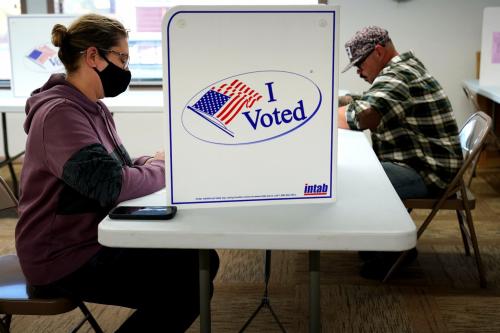Few elements of American politics cause so much consternation and such widespread
complaint as the way we nominate and confirm a president’s choices to fill his top policy-making
positions.
The process of getting the president’s appointees into place in a timely fashion is indisputably broken.
Presidential appointees, who are responsible for implementing the president’s policy goals at the
beginning of each administration, face such an onerous process of vetting, background checking,
financial disclosing and political grandstanding that many jobs vital to the orderly management of the
public’s interest go unfilled for months on end. It’s time to bring the appointments process into the 21st
century.
Over the years, the obstacles to serving as a presidential appointee have grown ever more daunting.
Background checks require days of intrusive interviews and form-filling that plumb every nook and
cranny of candidates’ lives. Financial disclosure sometimes leads candidates to complete financial
divesture. Forms multiply, reputations are torn asunder and, all the while, the people’s business goes
unattended.
Unfortunately, at the end of this grueling background ordeal, candidates are finding that the rewards for
surviving the process are diminishing. Pay scales, especially for senior appointees, fall further and further
behind senior executive salaries in the private sector. Hours are long. Relocation, especially to
Washington, D.C., from less expensive locales, discourages outside-the-Beltway candidates from
serving. As a result, too many qualified candidates are saying no thanks, and our nation is much the
poorer for it.
The Presidential Appointee Initiative committee is holding hearings this week to search for possible
solutions to the problems afflicting the appointments process. We realize that reasonable people can and
will disagree about the solutions to the problems in the process, but we have a good idea of the general
direction that these reforms should take.
First, the process simply has to move faster. Over the past few administrations, it’s taken almost 10
months from Election Day until all of the presidents’ appointees were in place. When you also consider
the time these appointees need to orient themselves to their job and get up to speed on important issues
in their agencies, some departments in the federal government can go a year without policy leadership.
Speeding up the process should be a primary goal.
Second, we should examine ways to make the process fairer to appointees without jeopardizing the
public’s right to full disclosure of candidates’ potential conflicts of interest. Research done by the
Presidential Appointee Initiative at The Brookings Institution demonstrates that many potential
appointees are loath to serve because they view the intrusiveness of the vetting process as confusing and
embarrassing. One qualified candidate who turned down an opportunity to serve summed up the
problem: “The threat of having your family vilified was too much for me.” We should review the process
with an eye toward developing a standard of reasonableness that protects the public’s interests while not
discouraging the most qualified from service.
Third, we should create a nominating process that is rigorous and effective. The Founding Fathers all
took time off from their farms, businesses and law practices to serve their country, and they expected
government service to be a sacrifice. We all must accept that public servants must endure more scrutiny
of their lives, finances and public positions than their fellow citizens. Creating a rigorous and effective
nominating system will require a serious effort to rationalize disclosure forms, background checks and
the congressional confirmation process to ensure that the public knows what it needs to know from
those who are asked to serve.
The issues surrounding the appointments process aren’t partisan. We should ensure that this president—and future presidents—won’t have to wait until the second year of their administration to have their
appointees and policies in place.
Under the archaic appointments process now in place, each new presidential administration is like a new
car that won’t run because no one filled the gas tank or charged the battery. It’s time to overhaul the
system and let the people presidents choose assume their positions with their dignity and enthusiasm for
service intact.


Commentary
Op-edFix Appointments Process
April 12, 2001